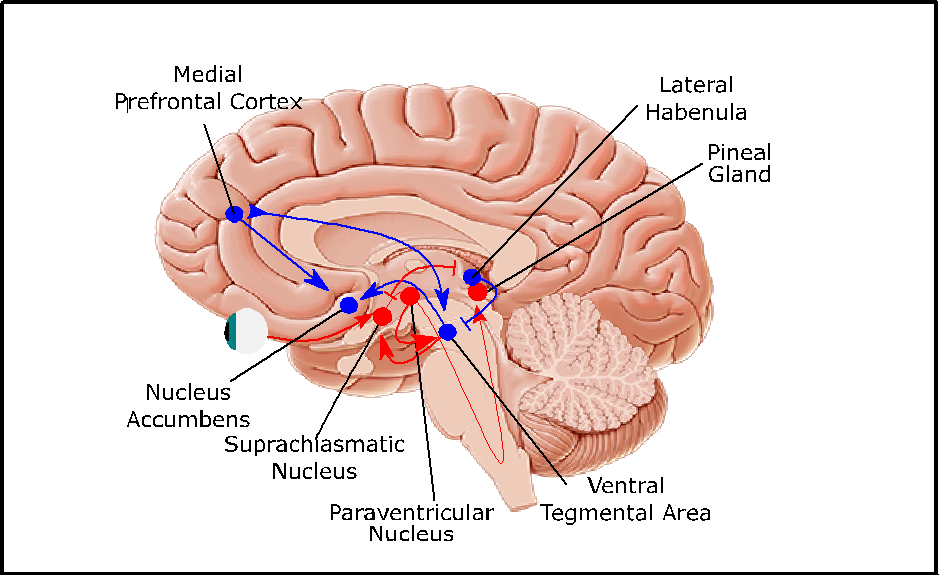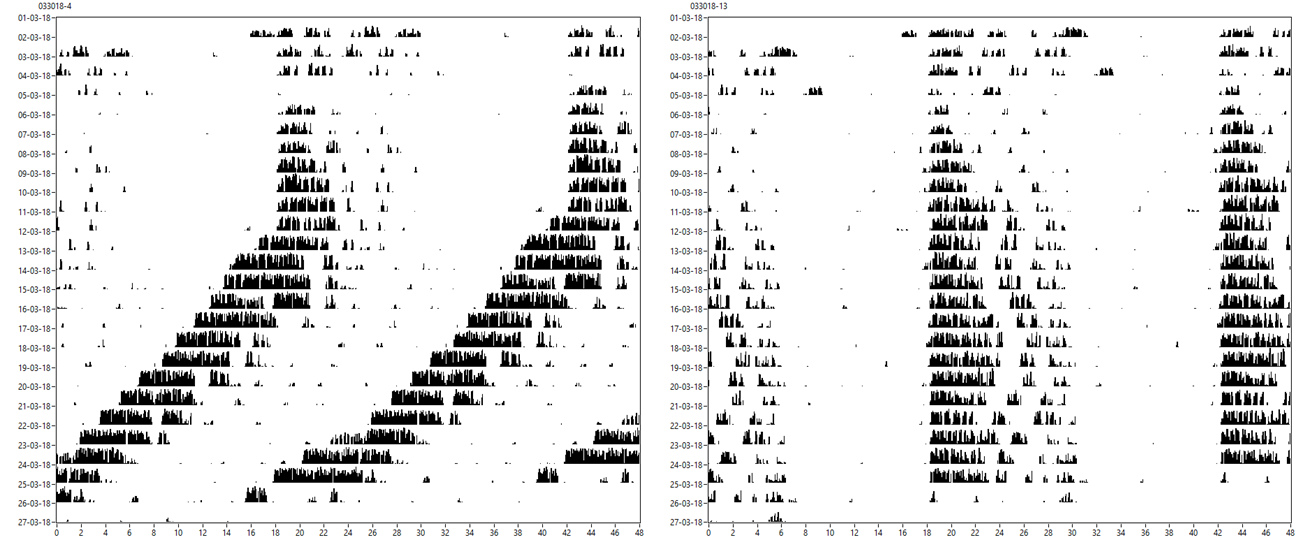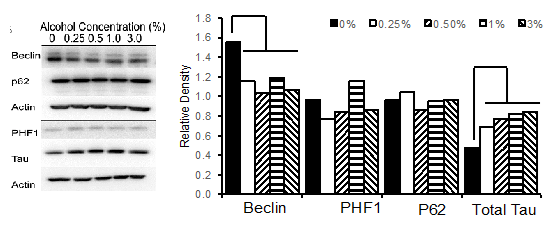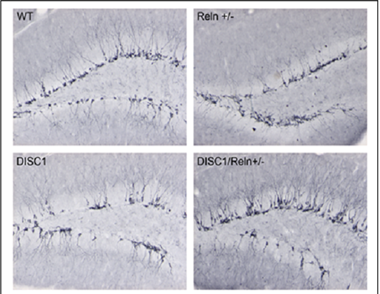Research
Overview
Alcohol use disorders and substance use disorders remain a major issue in the United States despite the various laws, campaigns, and preventative efforts. Alcohol is by far the most commonly-abused drug across the lifespan; of the 138 million alcohol users in the United States, almost half of drinkers report problem (binge or heavy) alcohol consumption, and 15.7 million report an AUD. Neurobiological changes in both the cortical control regions and limbic processing regions of the brain have been linked to addiction. We are particularly interested in the neuropsychiatric disorders that may increase susceptibility to addiction – such as circadian rhythm disruption – and those disorders which may be triggered or exacerbated by alcohol – such as Alzheimer’s disease.

Recent work suggests an important role for normal activity patterns in many aspects of behavior, including drug reward and addiction, due to interactions between our internal clock and our reward circuit.
-
Almost all adolescents, as well as shift workers and many elderly individuals, suffer from circadian disruption, abnormal patterns of activity and sleep. In adolescents, the sharp difference between weekday and weekend sleep times is a significant factor that may increase susceptibility to alcohol addiction. We use preclinical models to identify changes in activity patterns alter alcohol consumption, perception of reward, and blood alcohol metabolism.
Pictured: Analysis of activity patterns of mice in circadian disruption (Left) and on a normal activity cycle (right)
-
Recent evidence has suggested that alcohol addiction is a mostly-overlooked risk factor for the development of Alzheimer’s disease. We are studying how alcohol exposure may block normal cellular processes to clear abnormal proteins such as the tau protein that is implicated in Alzheimer’s disease, and how this may accelerate neurodegeneration in the brain.
Pictured: Alcohol exposure in an inducible-tau cell line decreases the levels of normal, clearance-promoting factors such as Beclin-1, and increases the levels of total tau
-
Despite decades of research, sundown syndrome (SS) remains a devastating aspect of Alzheimer’s disease for many patients and their caregivers. Patients demonstrate wandering, anxiety, and aggression in the early evening hours, increasing stress and physical danger to themselves and those around them. We are studying how changes in the internal, or circadian clock, produce this syndrome in the aged brain, and how drugs that correct the internal clock may improve both mood and cognition, using preclinical models of Alzheimer’s disease.
Pictured: Using specialized cages in light- and temperature-controlled chambers, we can observe changes in activity patterns in real-time, including overall reductions in activity in aged mice, and less sleep consolidation in the aged APP/PS1 mice.
-
There are multiple genes that contribute to an individual’s susceptibility to neuropsychiatric diseases like anxiety disorders and schizophrenia. We are interested in how changes in two genes – Disrupted-in-Schizophrenia 1 (DISC1) and reelin – interact to drive neuropsychiatric symptoms. When both genes are mutated, we have found that cells in the hippocampus, a key area for learning and memory, fail to develop into fully differentiated neurons, and are improperly distributed. This is also associated with changes in cognition and emotional control.
Pictured: Cross-sections of the hippocampus show reduced extensions in reelin (Reln +/-) mutant mice, reduces numbers of neurons in DISC1 mutant mice, and reduced differentiation and distribution in mice with both mutations.
Selected Publications
Gulick, D., and Gamsby, J.J. (2018) Racing the clock: The role of circadian rhythmicity in addiction across the lifespan. Pharmacol Ther 2018 Mar.Online.
Stevanovic K., Yunus, A., Joly-Amado, A., Gordon, M., Morgan D., Gulick, D., and Gamsby, J.J. (2017). Disruption of Normal Circadian Clock Function in a Mouse Model of Tauopathy. Neurobio of Aging. Exp Neurol. 2017 Apr 28;294:58-67.
Lussier, A.L., Peters, M.M., Li, Q., Trotter, J.H., Collins, N.C., Smith, C., Gulick, D., Rebeck, G.W., LaDu, M.J., Weeber, E.J. (2017). ApoE genotype differentially modulates behavior in young EFAD-Tg mice. Mol Neurodeg. Submitted.
Gamsby, J.J., Pribish, A.M., Stevanovic, K.D., Yunus, A., and Gulick, D. (2017). Adolescence modulates the effect of chronic shifts in the light cycle on intermittent alcohol drinking in C57BL/6J mice. Front Behav Neurosci.Aug 21; 11:152.
Hethorn, W., Blankenship, S., Filinova, I., Rogers, J., Aguirre, D., Grieco, J., Peters, M., Gulick, D, Lussier, A, Weeber, E (2015) Reelin supplementation enhances synaptic plasticity and cognitive deficits in a mouse model for Angelman syndrome. Eur J Neuro. 41(10):1372-80.
Gamsby, J.J., and Gulick, D. (2015). Chronic shifts in the length and phase of the light cycle increase intermittent alcohol drinking in C57BL/6J mice. Front Behav Neurosci, 9:9, Feb 3.
Kumar, M.K., Gulick, D., Palaszewksi, D.M., Pross, S.H., Mhaskar, R., Nazian, S.J. (2016) Difficulty and Discriminative Ability of Core vs. Supplementary Questions – Can We Test for Competency and Excellence Simultaneously? Medical Science Educator, 26: 547-551.



